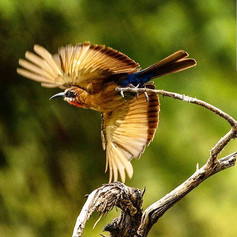
GREATER KUDULAND SAFARIS
The Heart of African Hunting since 1974

Herd of white rhino at sunset on Greater Kuduland. Their horns have been filed down to prevent them from being poached.

Herd of white rhino at sunset on Greater Kuduland. Their horns have been filed down to prevent them from being poached.
CONSERVATION
Our Founding Promise
Founded as a conservation initiative 45 years ago, Greater Kuduland strives to fulfill its founding promise of adhering to an incredibly strict code of ethics when it comes to the conservation and well-being of the Reserve's animals and their habitat to ensure that future generations will one day be able to witness the wonders of the African bush.
Over 90% of Greater Kuduland's tourism revenue goes back into conservation initiatives to protect the wildlife, the environment, and the cultural heritage of the land. These efforts led to Greater Kuduland being the very first private game reserve in South Africa to introduce elephants in 1991, since which the herd has almost quadrupled in size. Up until a few years ago when the Kruger National Park managed to expand its herds, Kuduland had the largest breeding herd of roan antelope in the country. We were also the first reserve to introduce disease-free buffalo into the area in 1975. Presently, we are one of the only reserves in the country that is home to both black and white rhino. These are just a few of our advances along the way to our goal to prevent the further decline of endangered animals.
WILDLIFE CONSERVATION
The Battle for Wildlife Preservation Through Focused Efforts




ENVIRONMENTAL CONSERVATION
We conduct a large amount of research on non-game species to better understand our role in maintaining a healthy ecosystem.
Studies on biodiversity include the analysis of the flora, insects, and small mammals and birds, and are administered to help us better understand what is needed for our wildlife populations thrive. We then apply this research through closely monitored programs to eliminate environmental threats such as invasive species, erosion, contaminated water, and pollution.
Protecting our Environment
CULTURAL CONSERVATION
In Honour Our Fathers Who Walked the Land Before Us
We are very proud of the Reserve’s ancient roots and do our best to guard its heritage. A recent study done by the University of Pretoria discovered archaeological findings that prove the first human inhabitants on the Reserve date back to the Middle Stone Age.
We go to great lengths to protect the land’s history as it serves to remind us that we too are just visitors on this earth.



